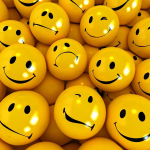
Every emotion serves a purpose. They don’t show up without a reason. In our very busy American culture, those of us in older generations were often encouraged to ignore emotional experiences in favor of “moving forward” towards whatever progress or success was determined to look like. This could vary wildly, depending on the primary system(s) with which that individual was affiliated (family, religious community, friend group, majority culture at large, etc.). In more recent years, there has been greater understanding the impact of “shoving down” undesired emotions can have, and often does have, on people. Because let’s be honest, just because you tell an emotion to go away, try to ignore it, pretend and even deny that it is there–does that really mean it’s gone?
Our emotions are communicators. They are telling us something. Although it may not always be effective to act on the emotional urge(s), it is imperative that we notice, acknowledge, and understand them and why they have come knocking on our proverbial door.
In just about every therapeutic modality there is a common thread of emotional recognition and regulation. This is especially true of trauma focused treatments. However, one modality goes even more in depth to understanding the function of emotions, how they can be activated, how they can be behaviorally expressed, and how they can be managed and controlled so they work for you instead of against you: Dialectical Behavior Therapy (DBT). In fact, an entire module in DBT is dedicated just to this cause. I call it “The Beast” module because of how in depth it goes and the amount of group sessions needed to cover the material appropriately. It’s illuminating.
It isn’t a coincidence that the gold standard for treating disorders often experienced with severe affect dysregulation focuses so much on the recognition and regulation of emotions. And as a culture, we are in desperate need of more education and acceptance of emotions and their functions.
Dr. Marsha Linehan talks more about this in this . Enjoy!



